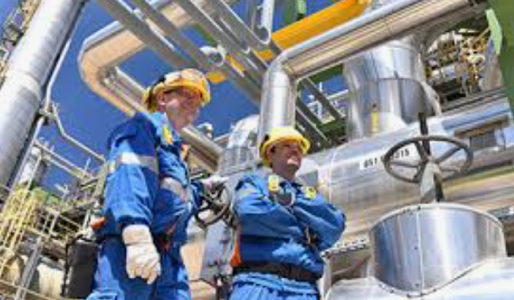Artificial intelligence has already left a visible mark on the tech industry’s workforce.
In just the first half of 2025, more than 80,000 tech workers have been laid off, with names like Microsoft, Meta, Intel, and TikTok making headlines. While restructuring cycles are common in tech, the timing and stated reasons for many of these cuts point to AI as a driving factor.
Texas Oil & Gas Operator Directory – $10
Includes: Account Name, Wells Drilled, Rig Reports, Location…..
From Microsoft’s acknowledgment that heavy AI investments influenced staffing decisions to ServiceNow’s projection of $100 million in annual savings through AI-driven efficiency, the pattern is clear: when AI can perform tasks faster and cheaper, companies reallocate resources — and people.
While some roles disappear, new opportunities emerge for those who can harness AI to innovate. Lightcast data shows that jobs requiring AI skills now command salaries 28% higher than similar roles without AI expertise. The future of work is shifting toward blended teams of humans and machines.
Oxy’s AI Push: Beyond the Tech Hype
Occidental Petroleum (Oxy) is taking AI well beyond back-office automation, embedding it deep into its operational core:
- Gulf of America (Offshore Subsurface): AI projects are underway to enhance reservoir modeling, well planning, and production optimization, with full execution targeted in the next 1–2 years.
- Permian & U.S. Onshore: AI supports subsurface analysis and enables 40% “route-less” lease operations through automation, while optimizing CO₂ EOR operations to reduce purchased CO₂ needs.
- Oman (International): In Block 53, AI-driven drilling and artificial lift optimization have delivered record rig drilling efficiency and improved workover performance.
- Broader Use Cases: Dedicated AI teams are targeting logistics, supply chain optimization, and predictive maintenance, contributing to structural cost reductions and lower LOE per barrel.
Potential Impact on Oil & Gas Jobs
Oxy’s adoption of AI mirrors a familiar pattern from tech:
- Efficiency gains mean certain repetitive or logistics-heavy tasks may require fewer personnel.
- Specialized roles — especially in subsurface analytics, AI integration, and predictive maintenance — will grow in demand.
- Hybrid human–AI workflows could become the norm, with field operators increasingly managing AI-augmented systems rather than executing tasks manually.
The oil & gas sector’s workforce is historically resilient, adapting to technological shifts from automation to digital oilfields. However, AI represents a more profound change: it doesn’t just mechanize work — it learns and optimizes it. Companies that invest in upskilling their teams for AI collaboration will likely avoid the large-scale displacement seen in parts of the tech industry.
Bottom line:
AI is already reshaping the tech job market and is poised to do the same in oil & gas. For Oxy and other forward-looking operators, the challenge will be to balance efficiency gains with workforce evolution, ensuring the industry remains both competitive and people-powered in the AI era.



